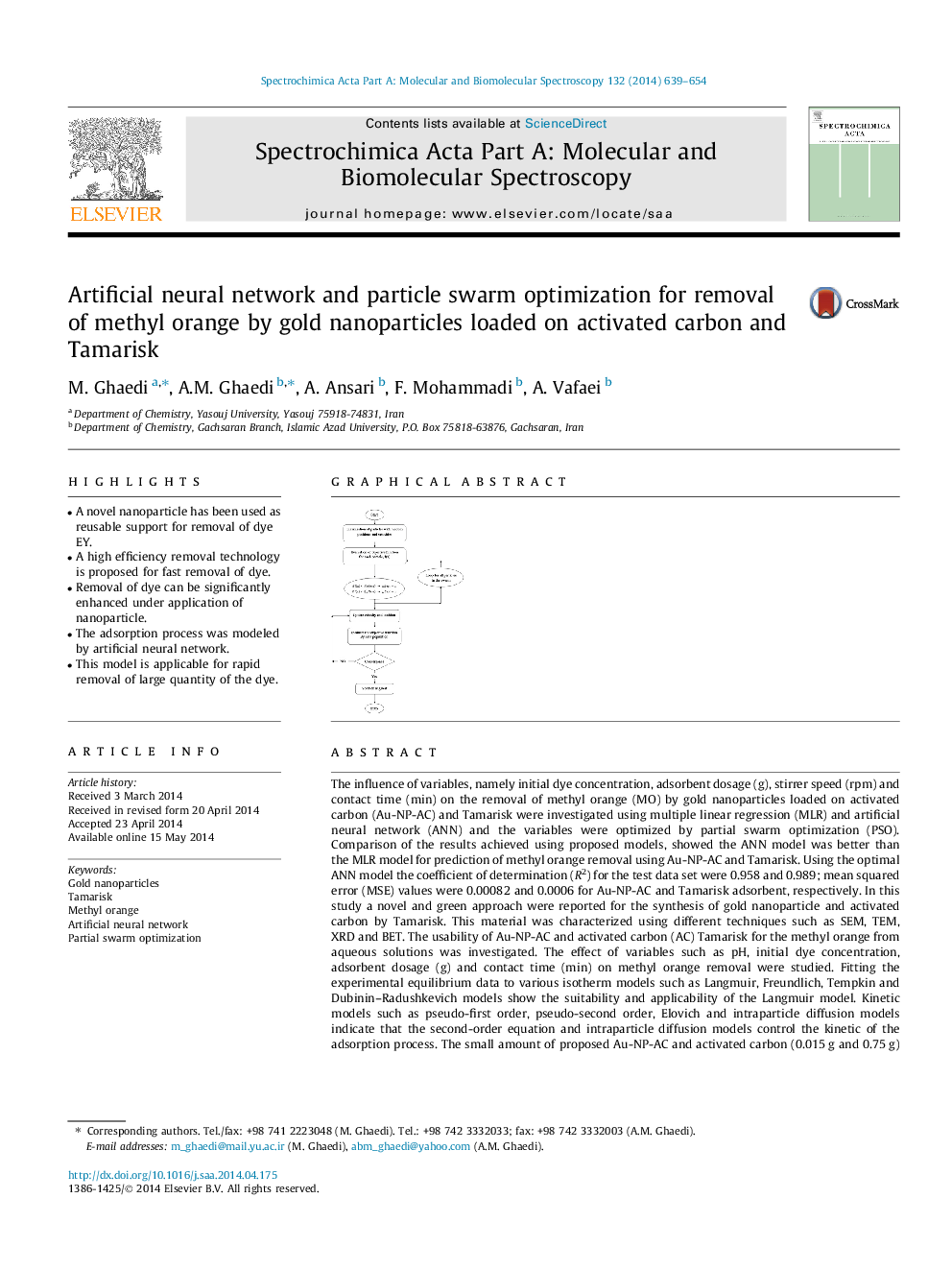| Article ID | Journal | Published Year | Pages | File Type |
|---|---|---|---|---|
| 1229628 | Spectrochimica Acta Part A: Molecular and Biomolecular Spectroscopy | 2014 | 16 Pages |
•A novel nanoparticle has been used as reusable support for removal of dye EY.•A high efficiency removal technology is proposed for fast removal of dye.•Removal of dye can be significantly enhanced under application of nanoparticle.•The adsorption process was modeled by artificial neural network.•This model is applicable for rapid removal of large quantity of the dye.
The influence of variables, namely initial dye concentration, adsorbent dosage (g), stirrer speed (rpm) and contact time (min) on the removal of methyl orange (MO) by gold nanoparticles loaded on activated carbon (Au-NP-AC) and Tamarisk were investigated using multiple linear regression (MLR) and artificial neural network (ANN) and the variables were optimized by partial swarm optimization (PSO). Comparison of the results achieved using proposed models, showed the ANN model was better than the MLR model for prediction of methyl orange removal using Au-NP-AC and Tamarisk. Using the optimal ANN model the coefficient of determination (R2) for the test data set were 0.958 and 0.989; mean squared error (MSE) values were 0.00082 and 0.0006 for Au-NP-AC and Tamarisk adsorbent, respectively. In this study a novel and green approach were reported for the synthesis of gold nanoparticle and activated carbon by Tamarisk. This material was characterized using different techniques such as SEM, TEM, XRD and BET. The usability of Au-NP-AC and activated carbon (AC) Tamarisk for the methyl orange from aqueous solutions was investigated. The effect of variables such as pH, initial dye concentration, adsorbent dosage (g) and contact time (min) on methyl orange removal were studied. Fitting the experimental equilibrium data to various isotherm models such as Langmuir, Freundlich, Tempkin and Dubinin–Radushkevich models show the suitability and applicability of the Langmuir model. Kinetic models such as pseudo-first order, pseudo-second order, Elovich and intraparticle diffusion models indicate that the second-order equation and intraparticle diffusion models control the kinetic of the adsorption process. The small amount of proposed Au-NP-AC and activated carbon (0.015 g and 0.75 g) is applicable for successful removal of methyl orange (>98%) in short time (20 min for Au-NP-AC and 45 min for Tamarisk-AC) with high adsorption capacity 161 mg g−1 for Au-NP-AC and 3.84 mg g−1 for Tamarisk-AC.
Graphical abstractFigure optionsDownload full-size imageDownload as PowerPoint slide
